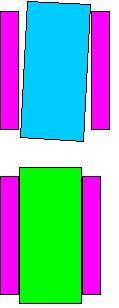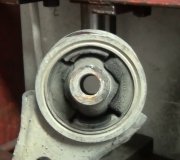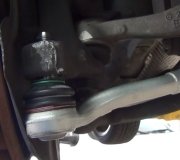1. Today I put my front end on jack stands to check my brakes, rotors, etc. Bc I got bored. Before removing the front driver side wheel, I gave it a spun. It would spin freely for maybe 1/2 a revolution and then immediatly slow down. I removed the wheel and spun the rotor and same thing. On a certain part of the rotor, the pad seemed like it would stick on that one part of the rotor. And then move freely once I forced it past that point. The front passenger side seems a little better, it is much easier to spin. While braking, the car doesn't veer to either side. So I don't suspect a brake issue. There is no shutter or shaking while braking. While driving straight. The car wants to veer left though. There are no smells coming from either side and both seem to be generating the same amount of heat. So is it normal for the rotor to not spin freely during a revolution? Also spinning the rotor backwards seems smoother if that helps diagnose.
More info: I have noticed while braking, there is a deep hmm sound. But I notice almost every single sound my car makes due to OCD. Haha and to add to all this mess.I have a vibration in my steering wheel that seems abnormal while driving at highway speeds (50-70). I also have excessive tire noise, which to me seems worse than tire noise. I have replaced both hub assemblies. Which led me to believe its the tires.
2nd question: to keep it simple. After I hit 50mph, I hear a whistling/squeak noise from what I think is the right rear wheel. I notice the sound at 60mph but its very hard to hear due to excessive road noise. Its more noticeble while coasting from 50mph to 40mph or keeping constant at 50mph.
So that's it. Hopefully its not confusing. Id be happy to give more info.
SPONSORED LINKS
Saturday, July 2nd, 2011 AT 9:52 PM




